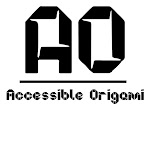Technique: Origami/Kirigami (Fold and cut or tear)
Sheets used: 1 A4 or rectangular
If you'd like to make a larger book, try folding this project from wrapping paper cut to the desired size. Brown kraft paper or white butcher paper would also work well for this project.
Pages in finished booklet: 8
Description:
Including the front and back covers, this origami booklet has eight pages. It measures 4 ½ inches x 2 ¾ inches (about 11 cm x 6 cm).
A * denotes the result or outcome of an action.
Instructions
Step 1
Place a rectangle on a flat surface in portrait orientation, or with the short edges at the top and bottom.
Step 2
Fold the sheet in half from left to right.
Crease and unfold.
Step 3
Fold the sheet in half from top to bottom.
Crease and unfold.
* You will have one vertical and one horizontal line dividing your rectangle into quarters.
Step 4
Now fold the top and bottom edges in so they meet along the horizontal center crease.
Crease well and unfold.
* Your rectangle will now be divided into 8 sections.
Step 5
Now fold the sheet in half from bottom to top.
* You should now have a rectangle, 2 layers thick, with the fold at the bottom.
* There will also be 1 vertical crease line and 1 horizontal crease line across your folded rectangle, dividing it into 4 equal sections.
Step 6
It is now time to make your cut or tear.
Explanation
You will be making a straight cut, starting from the bottom, closed edge of the rectangle moving along the vertical center line.
The cut will be through both layers of the paper and go straight up, just to where you encounter the horizontal crease line.
This crease will be the first and only crease you will come across.
Try to stop exactly where the two lines cross, but a small error will not be the end of the world.
Once you are sure of the fold where you will cut or tear as well as the starting and end point, fold along that crease back and forth a few times to weaken the paper.
You can also use a damp cloth, paper towel or cotton wool to wipe lightly along the vertical fold line in question.
Pick up the paper and hold it in which ever way is comfortable, as long as you make the cut or tear along the line just indicated.
Make your cut or tear and remember, it is just paper. You can practice until you get it right.
As you tear or cut, don't be alarmed if it seems your carefully folded model is falling apart.
It will hold together since you are only cutting a slit at the center of the sheet.
Step 7
Gently open the paper all the way and place it down with the short sides at the left and right.
* You will be able to confirm that you have created a slit at the very center of the page.
Step 8
Fold the top edge of the paper down to meet the bottom edge.
Leave folded.
* The slit will now be at the top edge of your folded rectangle.
Step 9
Pick up the model from your folding surface and lightly hold it near the left and right sides. Bring your hands together. The two sections on the left and right will stay as is while the two center sections will collapse to the back and front, forming a cross or an x-shaped model.
This movement reminds me a little of collapsing paper when making a waterbomb or square base.
* You will be holding a figure with 4 flaps, the pages, pointing in different directions.
Step 10
Fold the front flap to the left and the back flap to the right so that your paper can lay flat.
Step 11
Place your booklet down and press the pages flat, making sure the edges of the pages align perfectly.
Step 12
All that remains is to fold the booklet closed by bringing the left edge over to the right.
You can now page through your booklet, to confirm that there is, indeed, 8 pages, counting both sides of each page.
Note: There are various ways to make this booklet. Some steps have been adapted/altered to make folding and tearing or cutting easier for those with a visual impairment.
See, for example,
thesprucecrafts.com
For a similar booklet with a slightly different folding method/sequence, see
instructables.com
Compiled: \March 2023
For non-commercial use only.
This text copyright 2025 by accessorigami.com

Comments
Post a Comment